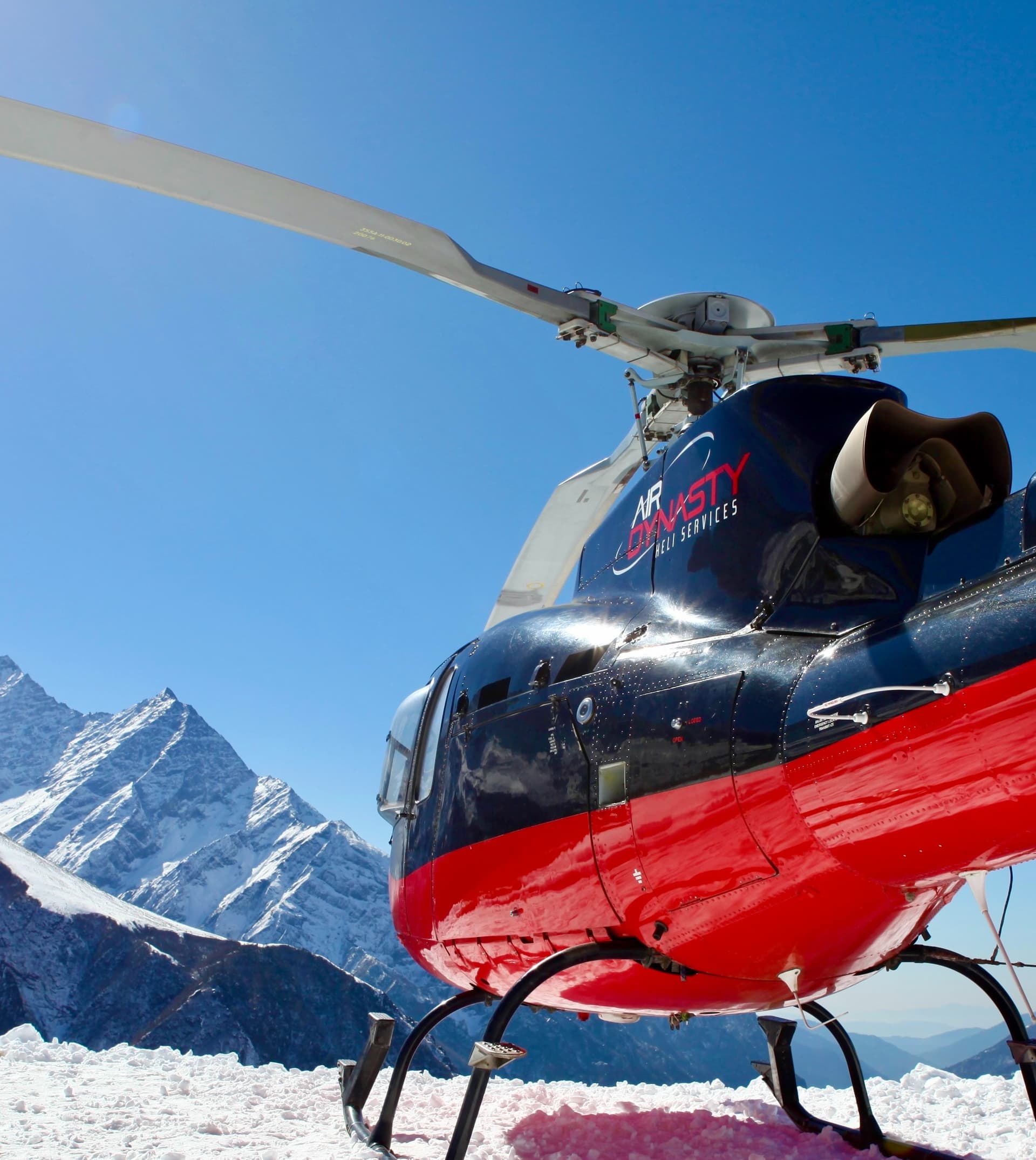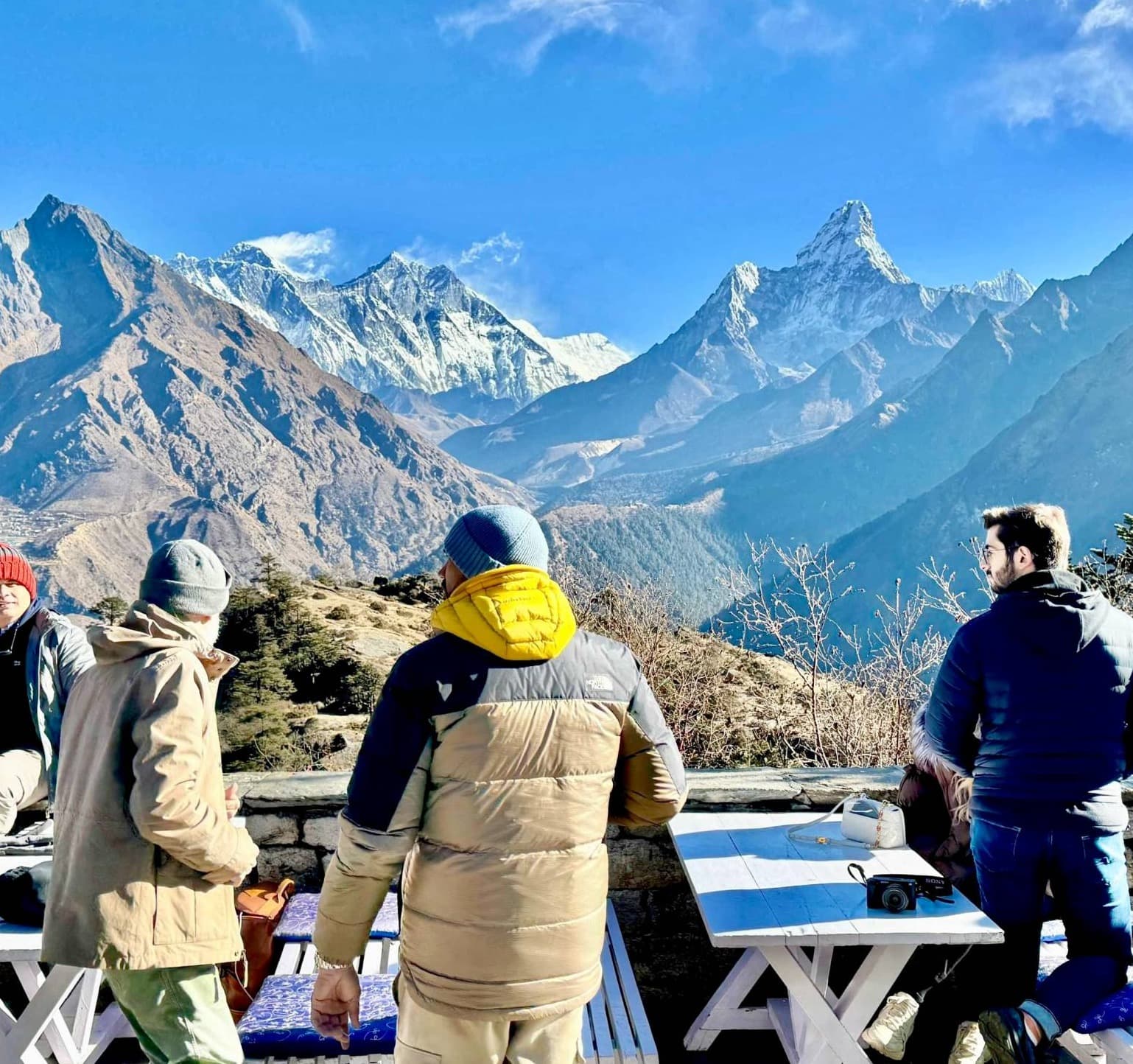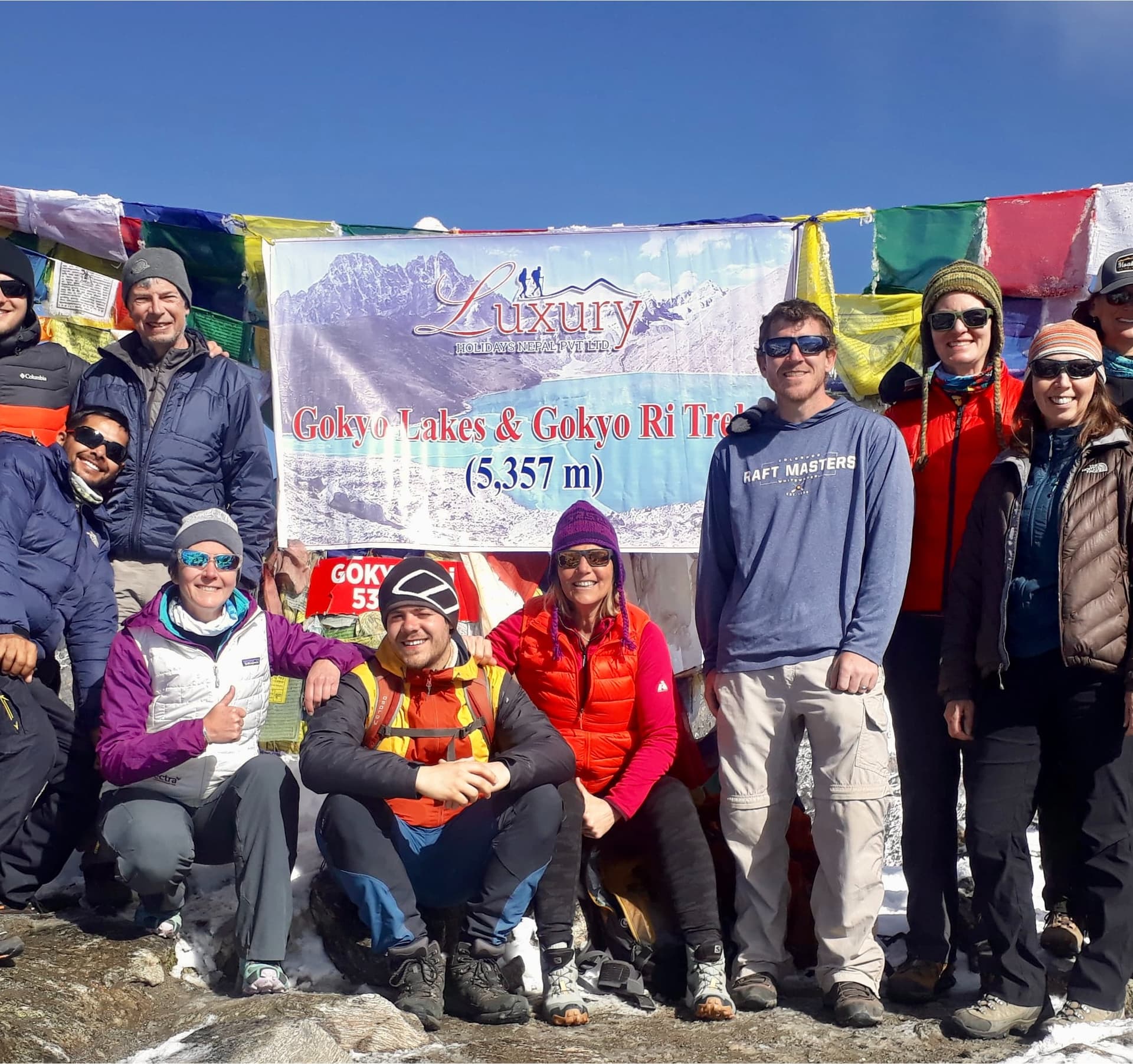Dingboche, nestled at an altitude of 4,410 meters (14,470 feet), is a picturesque village in the Khumbu region of Nepal and a key stop on the Everest Base Camp Trek. Surrounded by soaring peaks such as Ama Dablam, Lhotse, and Island Peak, Dingboche offers breathtaking panoramic views and a tranquil atmosphere for trekkers. Known as the "Summer Valley," it features expansive fields enclosed by stone walls, which protect crops like barley and potatoes from harsh Himalayan winds. The village’s sunny and relatively sheltered location makes it an ideal place for acclimatization, with trekkers often spending a rest day here to adapt to the increasing altitude.
Dingboche is not just a scenic stop but also a hub for exploration and adventure. Visitors can embark on acclimatization hikes to nearby landmarks like Nagarjun Hill (5,100 meters) or Chhukung Valley, which provide spectacular views of the surrounding mountains and glaciers. The village also offers insights into Sherpa culture, with its traditional houses, monasteries, and friendly locals. Trekkers can enjoy hearty meals in cozy teahouses, replenishing their energy for the journey ahead. With its stunning vistas, cultural richness, and vital role in altitude adjustment, Dingboche remains a highlight for those trekking through the Everest region.
Major Highlights
- Acclimatization Point: Dingboche is a critical acclimatization stop for trekkers heading to Everest Base Camp. The village provides an opportunity for trekkers to adjust to the altitude, reducing the risk of altitude sickness before heading to higher elevations.
- Stunning Mountain Views: Dingboche offers incredible views of some of the world’s most famous peaks, including Ama Dablam, Lhotse, and Makalu. The surrounding mountains create a breathtaking backdrop for trekkers, providing ample photo opportunities.
- Chhukhung Valley: From Dingboche, trekkers can visit the Chhukhung Valley, which offers magnificent views of Island Peak and the surrounding mountains. This area also serves as a base for those climbing Island Peak or other nearby peaks.
- Tibetan Buddhist Culture: Dingboche is home to the Sherpa community, and visitors can explore traditional Tibetan Buddhist monasteries and stupas. The village is dotted with prayer flags, mani stones, and chortens, adding to its spiritual atmosphere.
- Makalu and Lhotse Views: The views from Dingboche of Makalu (the world’s fifth-highest mountain) and Lhotse (the world’s fourth-highest mountain) are among the most stunning in the Everest region, providing trekkers with a sense of awe and wonder.
- Stone-Walled Fields: Dingboche is known for its unique stone-walled fields that surround the village. These fields are used by local farmers to grow barley, potatoes, and buckwheat, which contribute to the local economy.
Accommodation & Food
Dingboche offers a variety of teahouses and guesthouses that provide accommodation for trekkers. The guesthouses in the village are relatively simple but offer warm beds, shared bathrooms, and heating in the form of wood stoves or electric blankets. Due to its altitude, most guesthouses in Dingboche offer basic but comfortable amenities for trekkers.
Food in Dingboche mainly consists of Nepali and Tibetan dishes, with options like dal bhat (lentil soup with rice), momos (dumplings), thukpa (noodle soup), and chowmein. Some teahouses also serve pasta, pizzas, and sandwiches for trekkers craving familiar food. Hot drinks such as yak butter tea, ginger tea, and coffee are also available, providing warmth during the chilly evenings and mornings.
Route to Dingboche
Dingboche can be reached from Namche Bazaar, the largest Sherpa settlement in the region, by trekking through Phunki Tenga, Tengboche, and Somare. The trek takes approximately 5-6 hours, covering about 10 kilometers, with gradual ascents through rhododendron forests and alpine meadows. The trail offers stunning views of the surrounding peaks and passes through several smaller Sherpa villages, providing trekkers with both natural beauty and cultural insights.
For trekkers heading to Everest Base Camp, Dingboche is a critical stop for acclimatization. After Dingboche, trekkers typically continue on to Lobuche and eventually to Everest Base Camp. The trek from Dingboche to Lobuche takes around 4–5 hours, while the trek to Everest Base Camp usually takes 7–8 hours from Lobuche.
Best Time to Visit
The best times to visit Dingboche are during spring (March to May) and autumn (September to November). These seasons offer clear skies, moderate temperatures, and ideal trekking conditions.
- Spring (March to May): The weather is clear, and the temperature is mild. The rhododendron forests around Dingboche are in full bloom, adding vibrant colors to the landscape.
- Autumn (September to November): The weather is stable, and the skies are clear, providing excellent visibility of the Himalayas. This is considered the ideal trekking season in the Everest region.
- Winter (December to February): The temperatures can drop significantly, and snow can make trekking more challenging. However, it is a quieter time for trekking with fewer crowds.
- Monsoon (June to August): The region experiences heavy rainfall, making trekking conditions slippery and difficult due to mudslides and wet trails. It's best to avoid trekking in the monsoon season.
Permits Required
To trek in Sagarmatha National Park (which includes Dingboche), trekkers need the following permits:
- Sagarmatha National Park Permit: Required for all trekkers entering the park, costing approximately NPR 3,000 (about USD 26).
- TIMS (Trekkers’ Information Management System) Card: Required for all trekkers to help track trekking activities for safety purposes.
These permits can be arranged in Kathmandu or Lukla before starting the trek.
Tips for Visiting Dingboche
- Acclimatization: Dingboche is a critical stop for acclimatization to help prevent altitude sickness. Take a day or two to rest and explore the surroundings before heading higher.
- Weather Preparation: Temperatures can be cold, especially at night, so bring warm clothing, layers, and a good-quality sleeping bag to keep comfortable.
- Pack Essentials: Bring essential trekking gear such as trekking boots, sunscreen, water bottles, and a first-aid kit. A camera is also highly recommended to capture the stunning views of Everest, Ama Dablam, and other peaks.
- Respect Local Culture: Dingboche is home to the Sherpa community, so be respectful of local customs and traditions, especially when visiting monasteries or interacting with locals.
- Altitude Awareness: Dingboche is situated at 4,410 meters (14,468 feet). Make sure to take it slow and stay hydrated as you adjust to the higher altitude.
Why Visit Dingboche with Luxury Holidays Nepal?
- Expert Guides: Luxury Holidays Nepal offers expert guides who are well-versed in the Everest region's culture, terrain, and history, enhancing your trekking experience.
- Seamless Logistics: From accommodation to permits and meals, Luxury Holidays Nepal takes care of all logistics, making your journey to Dingboche and beyond hassle-free.
- Comfortable Accommodation: Stay in well-selected teahouses and lodges in Dingboche, offering comfort, warmth, and stunning views of the surrounding peaks.
- Customizable Itineraries: Whether you’re trekking to Everest Base Camp or just passing through Dingboche, Luxury Holidays Nepal can tailor your itinerary to suit your trekking pace and goals.
- Cultural Immersion: Engage with the Sherpa community in Dingboche, visit local monasteries, and experience the unique lifestyle of the Everest region.
FAQs
Q: How long does it take to trek from Namche Bazaar to Dingboche?
A: The trek from Namche Bazaar to Dingboche typically takes 5–6 hours, covering approximately 10 kilometers.
Q: What is the altitude of Dingboche?
A: Dingboche is located at an altitude of 4,410 meters (14,468 feet), making it an important acclimatization stop for trekkers heading toward Everest Base Camp.
Q: Is Dingboche suitable for beginner trekkers?
A: Dingboche is accessible for trekkers with moderate fitness levels. However, the altitude may cause fatigue, so acclimatization is important before heading higher.
Q: Are there medical facilities in Dingboche?
A: Dingboche is a small village, and while there are no major medical facilities, a small clinic is available for basic medical needs. It’s advisable to carry a first-aid kit and any necessary personal medications.
Q: What should I pack for my trek to Dingboche?
A: Essential items include trekking boots, warm clothing, sun protection, water bottles, snacks, and a first-aid kit. A camera and personal medications are also recommended.
Q: Is there mobile network coverage in Dingboche?
A: Mobile network coverage is available in Dingboche, but the signal can be weak in more remote areas. It’s best to inform family or friends of your itinerary in advance.
Q: How high is the Everest Viewpoint from Dingboche?
A: The Everest Viewpoint is located at 3,880 meters, offering stunning views of Mount Everest and the surrounding peaks. It is a popular acclimatization hike from Dingboche.








